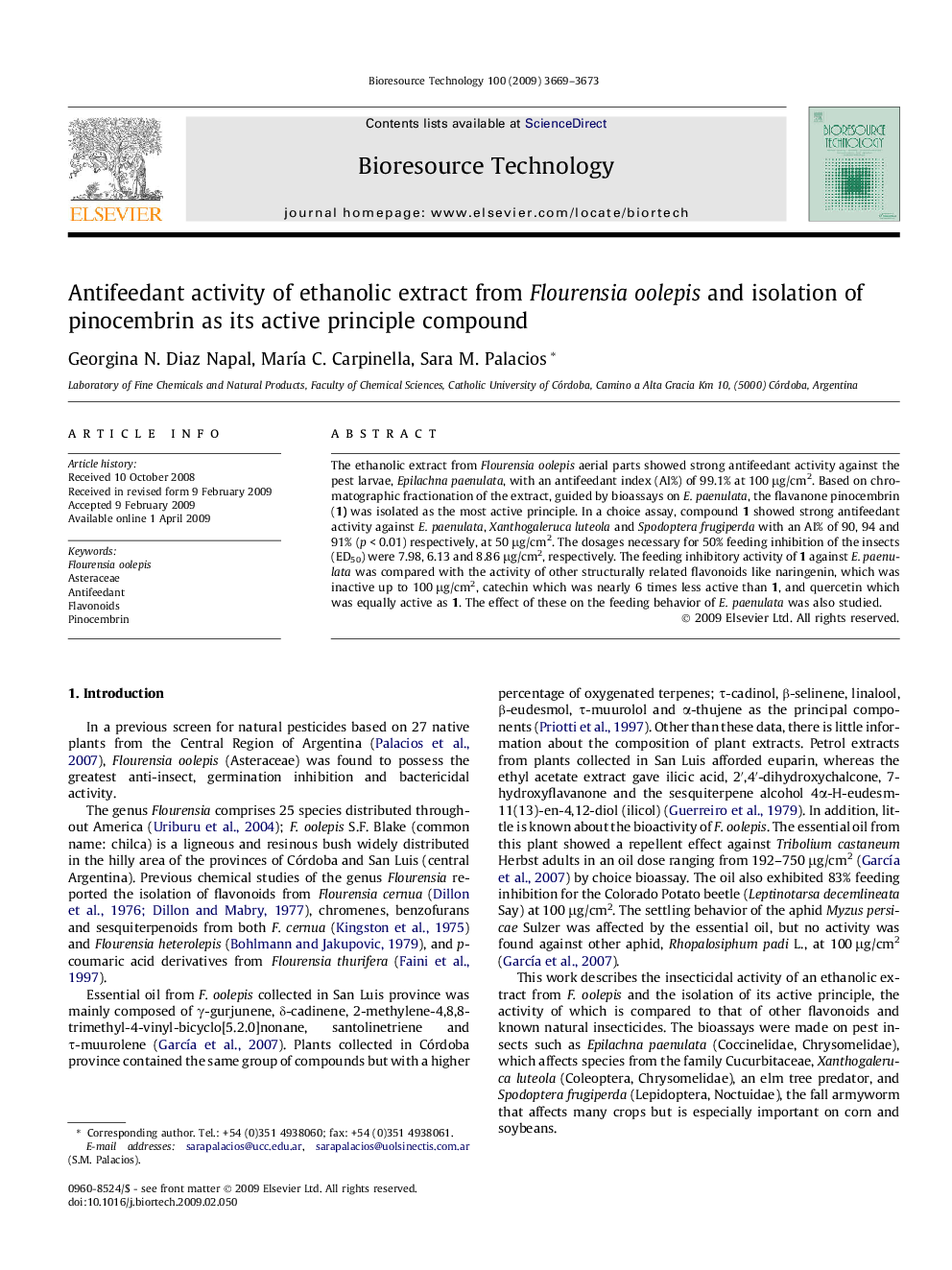| Article ID | Journal | Published Year | Pages | File Type |
|---|---|---|---|---|
| 683622 | Bioresource Technology | 2009 | 5 Pages |
The ethanolic extract from Flourensia oolepis aerial parts showed strong antifeedant activity against the pest larvae, Epilachna paenulata, with an antifeedant index (AI%) of 99.1% at 100 μg/cm2. Based on chromatographic fractionation of the extract, guided by bioassays on E. paenulata, the flavanone pinocembrin (1) was isolated as the most active principle. In a choice assay, compound 1 showed strong antifeedant activity against E. paenulata, Xanthogaleruca luteola and Spodoptera frugiperda with an AI% of 90, 94 and 91% (p < 0.01) respectively, at 50 μg/cm2. The dosages necessary for 50% feeding inhibition of the insects (ED50) were 7.98, 6.13 and 8.86 μg/cm2, respectively. The feeding inhibitory activity of 1 against E. paenulata was compared with the activity of other structurally related flavonoids like naringenin, which was inactive up to 100 μg/cm2, catechin which was nearly 6 times less active than 1, and quercetin which was equally active as 1. The effect of these on the feeding behavior of E. paenulata was also studied.
